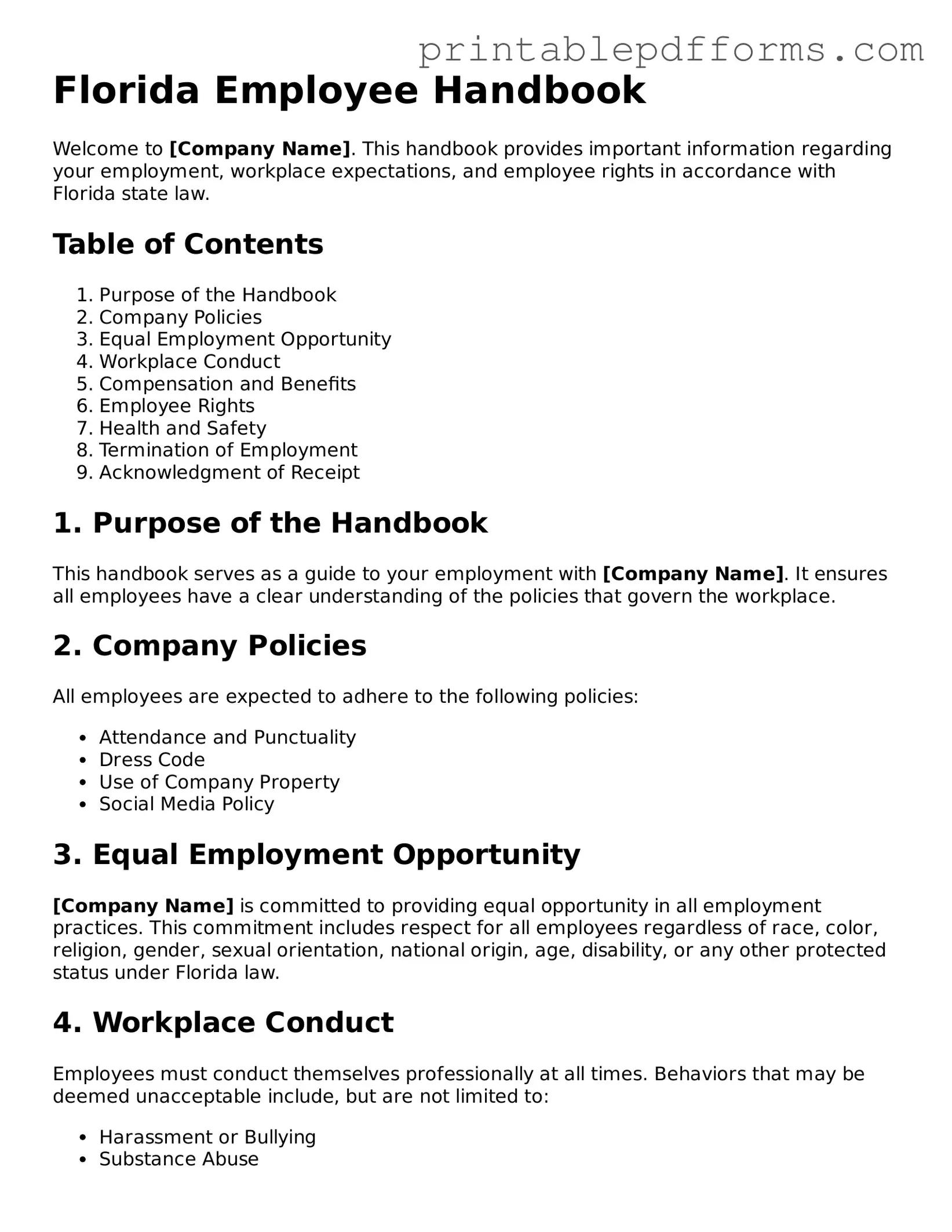Florida Employee Handbook
Welcome to [Company Name]. This handbook provides important information regarding your employment, workplace expectations, and employee rights in accordance with Florida state law.
Table of Contents
- Purpose of the Handbook
- Company Policies
- Equal Employment Opportunity
- Workplace Conduct
- Compensation and Benefits
- Employee Rights
- Health and Safety
- Termination of Employment
- Acknowledgment of Receipt
1. Purpose of the Handbook
This handbook serves as a guide to your employment with [Company Name]. It ensures all employees have a clear understanding of the policies that govern the workplace.
2. Company Policies
All employees are expected to adhere to the following policies:
- Attendance and Punctuality
- Dress Code
- Use of Company Property
- Social Media Policy
3. Equal Employment Opportunity
[Company Name] is committed to providing equal opportunity in all employment practices. This commitment includes respect for all employees regardless of race, color, religion, gender, sexual orientation, national origin, age, disability, or any other protected status under Florida law.
4. Workplace Conduct
Employees must conduct themselves professionally at all times. Behaviors that may be deemed unacceptable include, but are not limited to:
- Harassment or Bullying
- Substance Abuse
- Theft or Misappropriation of Company Resources
5. Compensation and Benefits
Employees are entitled to receive competitive compensation and benefits. Our benefits package includes:
- Health Insurance
- Retirement Plans
- Paid Time Off
6. Employee Rights
Employees have rights under both federal and Florida state laws. These include:
- Right to a Safe Work Environment
- Right to Fair Wages
- Right to Be Free from Discrimination
7. Health and Safety
Your health and safety are paramount. [Company Name] follows OSHA regulations to maintain a safe work environment. Report any unsafe conditions immediately to your supervisor.
8. Termination of Employment
Proper procedures must be followed for terminating employment. Whether initiated by the employee or the company, notice and documentation are essential. Be aware of the potential impacts on benefits and final paycheck distribution.
9. Acknowledgment of Receipt
All employees must sign an acknowledgment form stating they have received, read, and understood this handbook. Please complete the following:
I, [Employee Name], acknowledge that I have received and understand the Florida Employee Handbook of [Company Name].
Signature: ___________________________________ Date: _______________
For any questions or clarifications regarding this handbook, please contact [HR Contact Information].
